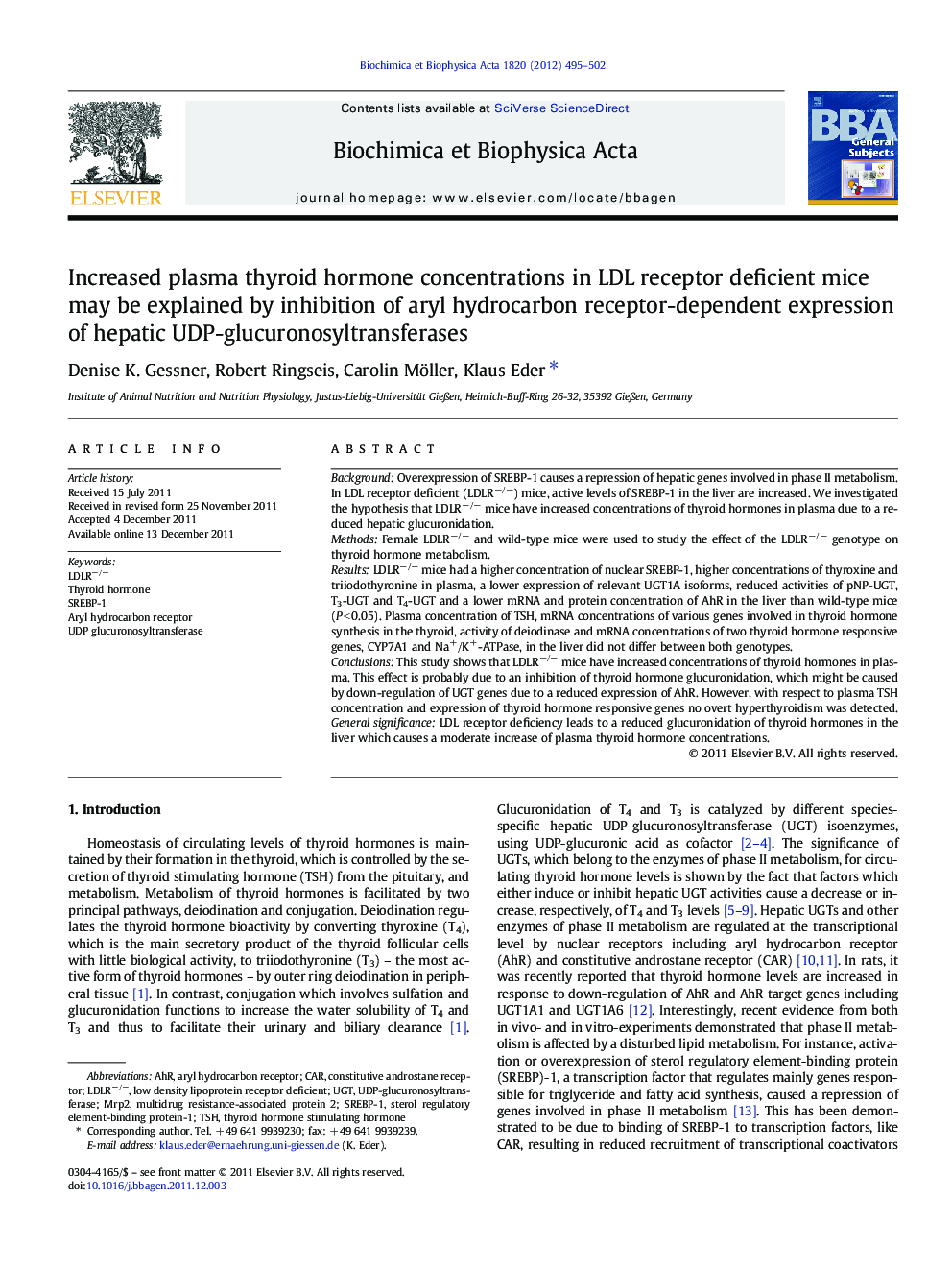| Article ID | Journal | Published Year | Pages | File Type |
|---|---|---|---|---|
| 1947774 | Biochimica et Biophysica Acta (BBA) - General Subjects | 2012 | 8 Pages |
BackgroundOverexpression of SREBP-1 causes a repression of hepatic genes involved in phase II metabolism. In LDL receptor deficient (LDLR−/−) mice, active levels of SREBP-1 in the liver are increased. We investigated the hypothesis that LDLR−/− mice have increased concentrations of thyroid hormones in plasma due to a reduced hepatic glucuronidation.MethodsFemale LDLR−/− and wild-type mice were used to study the effect of the LDLR−/− genotype on thyroid hormone metabolism.ResultsLDLR−/− mice had a higher concentration of nuclear SREBP-1, higher concentrations of thyroxine and triiodothyronine in plasma, a lower expression of relevant UGT1A isoforms, reduced activities of pNP-UGT, T3-UGT and T4-UGT and a lower mRNA and protein concentration of AhR in the liver than wild-type mice (P < 0.05). Plasma concentration of TSH, mRNA concentrations of various genes involved in thyroid hormone synthesis in the thyroid, activity of deiodinase and mRNA concentrations of two thyroid hormone responsive genes, CYP7A1 and Na+/K+-ATPase, in the liver did not differ between both genotypes.ConclusionsThis study shows that LDLR−/− mice have increased concentrations of thyroid hormones in plasma. This effect is probably due to an inhibition of thyroid hormone glucuronidation, which might be caused by down-regulation of UGT genes due to a reduced expression of AhR. However, with respect to plasma TSH concentration and expression of thyroid hormone responsive genes no overt hyperthyroidism was detected.General significanceLDL receptor deficiency leads to a reduced glucuronidation of thyroid hormones in the liver which causes a moderate increase of plasma thyroid hormone concentrations.
► LDLR−/− mice have a reduced expression of AhR and UGTs in the liver. ► LDLR−/− mice have a diminished glucuronidation of thyroid hormones. ► LDLR−/− mice have increased plasma thyroid hormone concentrations. ► An interaction between SREBP-1, AhR and thyroid hormone metabolism is proposed.
